Enzymes(酶)
Enzymes are very efficient and specific catalyst proteins which react with 1 or few types of substrates in biochemical reactions and are responsible for bringing about almost all of the chemical reactions in living organisms. Enzymes speed up reactions by providing an alternative reaction pathway of lower activation energy. Without enzymes, reactions take place at a rate far too slow for the pace of metabolism which means that they speed up the chemical reactions in living things.
There are 2 types of enzymes, ones that help join specific molecules together to form new molecules & others that help break specific molecules apart into separate molecules. Enzymes play many important roles ouside the cell as well. One of the best examples of this is the digestive system. For instance, it is enzymes in your digestive system that break food down in your digestive system break food down into small molecules that can be absorbed by the body. Some enzymes in your digestive system break down starch, some proteins and others break down fats. The enzymes used to digest our food are extra-cellular since they are located outside our cells & enzymes inside our cells are intra-cellular enzymes. Enzymes are used in ALL chemical reactions in living things; this includes respiration, photosynthesis, movement growth, getting rid of toxic chemicals in the liver and so on. Enzymes are proteins that must have the correct structure to be active. They are very easily affected by heat, pH and heavy metal ions.
Ribonucleoprotein enzyme catalytic activity is located in the protein part but for some the catalytic activity is in the RNA part. A catalyst is any substance which makes a chemical reaction go faster, without itself being changed. A catalyst can be used over and over again in a chemical reaction and does not get used up.
Enzymes lower the amount of activation energy needed by binding to the reactants of the reaction they catalyze, thus speed up the reaction and can process millions of molecules per second. Enzymes are typically large proteins with high molecular weight that permit reactions to go at conditions that the body can tolerate.
Enzyme nomenclature is based on what the enzyme reacts with & how it reacts along with the ending ase.
Enzymes must get over the activation energy hurdle.
Enzymes change how a reaction will proceed which reduces the activation energy and makes it faster. The more we increase the enzyme concentration the faster the reaction rate for non-catalyzed reactions. Enzymes that are catalyzed reactions also increase reaction rate at higher level of concentration but up to a certain point called Vmax which means that the enzyme has reached its maximum point. The reaction is limited by both the concentrations of the enzyme and substrate. Enzymes as catalysts take part in reactions which provide an alternative reaction pathway. Enzymes do not undergo permanent changes and remain unchanged at the end of the reaction. They only change the rate of reaction, not the position of the equilibrium.Enzymes as catalysts are highly selective by only catalysing specific reactions due to the shapes of the enzyme’s molecule.
Enzymes contain a globular protein part called apoenzyme and a non-protein part named cofactor or prosthetic group or metal-ion-activator. Changes in temperature and pH have great influence on the intra- and intermolecular bonds that hold the protein part in their secondary and tertiary structures.
Examples of cofactors are 1. Prosthetic group that are permanently bound to the enzyme. 2. Activator group which are cations (positively charged metal ions) & temporarily bind to the active site of the enzyme. 3.Coenzymes, usually vitamins or made from vitamins which are not permanently bound to the enzyme molecule, but combine with the enzyme-substrate complex temporarily. Enzymes require the presence cofactors before their catalytic activity can be exerted. This entire active complex is referred to as the holoenzyme.
Without enzymes, our guts would take weeks to digest our food, our muscles, nerves and bones would not work properly and so on…
Main Enzyme category groups:
Oxidoreductases:
All enzymes that catalyse oxido-reductions belong in this class. The substrate oxidized is regarded as a hydrogen or electron donor. The classification is based on 'donor:acceptor oxidoreductase'. The common name is 'dehydrogenase', wherever this is possible; as an alternative, 'acceptor reductase' can be used. 'Oxidase' is used only where O2 is an acceptor. Classification is difficult in some cases, because of the lack of specificity towards the acceptor.
Transferases:
Transferases are enzymes that transfer a group, for example, the methyl group or a glycosyl group, from one compound (generally regarded as donor) to another compound (generally regarded as acceptor). The classification is based on the scheme 'donor:acceptor grouptransferase'. The common names are normally formed as 'acceptor grouptransferase' or 'donor grouptransferase'. In many cases, the donor is a cofactor (coenzyme) that carries the group to be transferred. The aminotransferases constitute a special case.
Hydrolases:
These enzymes catalyse the hydrolysis of various bonds. Some of these enzymes pose problems because they have a very wide specificity, and it is not easy to decide if two preparations described by different authors are the same, or if they should be listed under different entries. While the systematic name always includes 'hydrolase', the common name is, in most cases, formed by the name of the substrate with the suffix -ase. It is understood that the name of the substrate with this suffix, and no other indicator, means a hydrolytic enzyme. It should be noted that peptidases have recommended names rather than common names.
Lyases:
Lyases are enzymes that cleave C-C, C-O, C-N and other bonds by means other than by hydrolysis or oxidation. They differ from other enzymes in that two (or more) substrates are involved in one reaction direction, but there is one compound fewer in the other direction. When acting on the single substrate, a molecule is eliminated and this generates either a new double bond or a new ring. The systematic name is formed according to 'substrate group-lyase'. In common names, expressions like decarboxylase, aldolase, etc. are used. 'Dehydratase' is used for those enzymes that eliminate water. In cases where the reverse reaction is the more important, or the only one to be demonstrated, 'synthase' may be used in the name.
Ligases:
Ligases are enzymes that catalyse the joining of two molecules with concomitant hydrolysis of the diphosphate bond in ATP or a similar triphosphate. 'Ligase' is often used for the common name, but, in a few cases, 'synthase' or 'carboxylase' is used. 'Synthetase' may be used in place of 'synthase' for enzymes in this class.
Products for Enzymes
- 41701(11)
- Activating Transcription Factor(3)
- Adenylate Kinase(10)
- AHCY(3)
- Aldolase(9)
- Asparaginase(5)
- Aurora Kinase(18)
- Beta Lactamase(3)
- Calcium and Integrin Binding(2)
- Calcium/Calmodulin-Dependent Protein Kinase(4)
- Carbonic Anhydrase(49)
- Casein Kinase(36)
- Cathepsin(52)
- Chitinase(5)
- Creatin Kinases(9)
- Cyclin(7)
- Cyclin-Dependent Kinase(18)
- Cyclophilin(23)
- Deaminase(14)
- Decarboxylase(12)
- Dehydrogenase(96)
- Discoidin Domain Receptor Tyrosine Kinase(2)
- DNA Polymerase(4)
- EGF Receptor(3)
- Endonuclease(6)
- Enolase(10)
- Enterokinase(5)
- Epimerase(3)
- Esterase(15)
- FGF Receptors(12)
- FK506 Binding Protein(10)
- Fructosamine 3 Kinase(2)
- Galactosidase(5)
- Glucosidase(32)
- Gluteradoxin(7)
- Glycogen synthase kinase(2)
- Glycosylase(10)
- Glyoxalase(3)
- Granzyme(7)
- Guanylate Kinase(2)
- Heparanase(2)
- Histone Deacetylase(3)
- Hydratase(10)
- Hydrolase(33)
- Hydroxylase(6)
- Isomerase(26)
- Jun N-terminal Kinase(1)
- Jun Proto-Oncogene(2)
- Kallikrein(26)
- Ligase(4)
- Lipase(14)
- Lipocalin(6)
- Lyase(9)
- LYVE1(3)
- Mitogen-Activated Protein Kinase(16)
- MMP(68)
- Mutase(11)
- Natural Enzymes(4)
- Nuclease(18)
- Nucleotidase(4)
- Nudix Type Motif(11)
- Other Enzymes(63)
- Oxidase(23)
- Oxygenase(12)
- Paraoxonase(3)
- Peptidase(41)
- Peroxiredoxin(10)
- Phosphatase(150)
- Phosphorylase(9)
- PI3-kinase(5)
- Polymerase(13)
- PPARG(2)
- Protease(15)
- Proteasome(54)
- Protein Kinase Akt1/PKB alpha(4)
- Protein Kinase-A(7)
- Protein Kinase-C(3)
- Protein Kinases(86)
- Protein Tyrosine Phosphatase(10)
- Reductase(60)
- Secreted Phospholipase A2(10)
- Serine Threonine Kinase(4)
- Sulfatase(8)
- Synthase(23)
- Synthetase(33)
- TGFBR(3)
- TGM2(3)
- TIMP(10)
- TPA(4)
- Transferase(156)
- Tyrosine Kinase(9)
- Ubiquitin Conjugating Enzyme(39)
- Uromodulin(4)
- VEGF Receptors(14)
- Transaminase(19)
- Hexokinase(6)
- TIE1(6)
- Cat.No. 产品名称 Information
-
GP21965
MVD Human
Mevalonate Decarboxylase Human Recombinant

-
GP22564
MVK Human
Mevalonate Kinase Human Recombinant

-
GC64030
MY10
MY10 是一种有效和具有口服活性的的受体蛋白酪氨酸磷酸酶 (RPTPβ/ζ) 抑制剂。MY10 可以减弱了类似暴饮暴食的乙醇消耗和乙醇奖励。
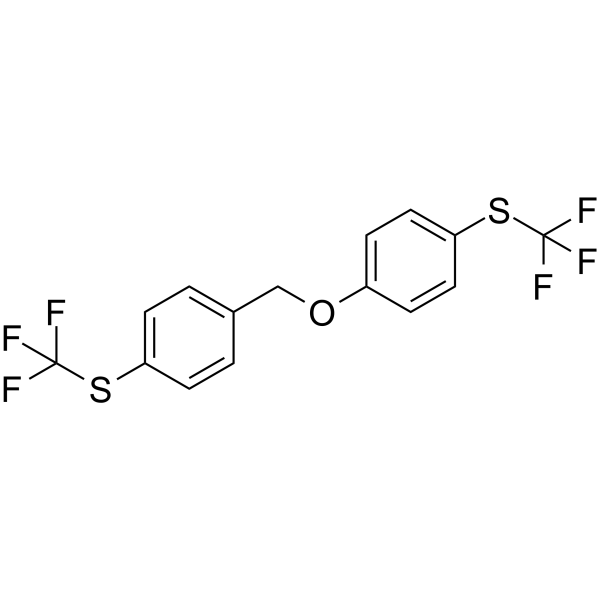
-
GC69515
MY33-3
MY33-3 是一种有效和选择性的蛋白酪氨酸磷酸酶 RPTPβ/ζ 抑制剂,IC50 值为 ~0.1 μM。MY33-3 还抑制 PTP-1B (IC50 ~0.7 μM)。MY33-3 可以减少乙醇消耗并缓解 Sevoflurane 引起的神经炎症和认知功能障碍。
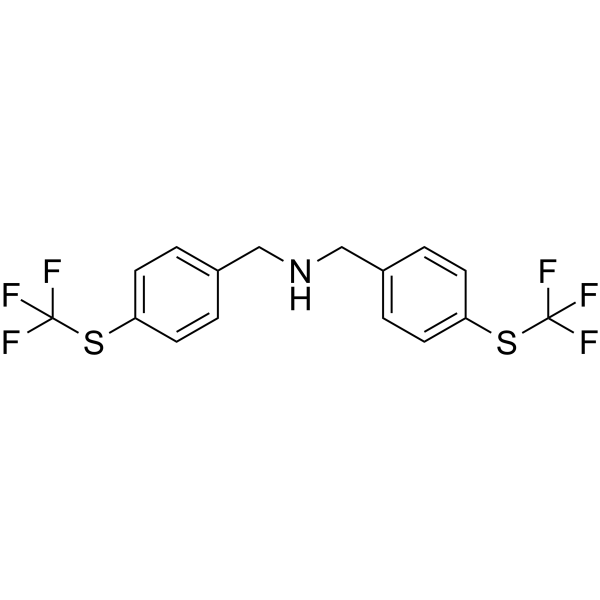
-
GC64605
MY33-3 hydrochloride
MY33-3(盐酸盐)
MY33-3 hydrochloride 是一种有效和选择性的蛋白酪氨酸磷酸酶 RPTPβ/ζ 抑制剂,IC50 值为 ~0.1 μM。MY33-3 hydrochloride 还抑制 PTP-1B (IC50 ~0.7 μM)。MY33-3 hydrochloride 可以减少乙醇消耗并缓解 Sevoflurane 引起的神经炎症和认知功能障碍。
-
GC63442
N-Caffeoyl O-methyltyramine
N-Caffeoyl O-methyltyramine is a class of alkaloid isolated from Cuscuta reflexa with strong inhibitory activity against α-glucosidase with IC50 of 103.58 μM.
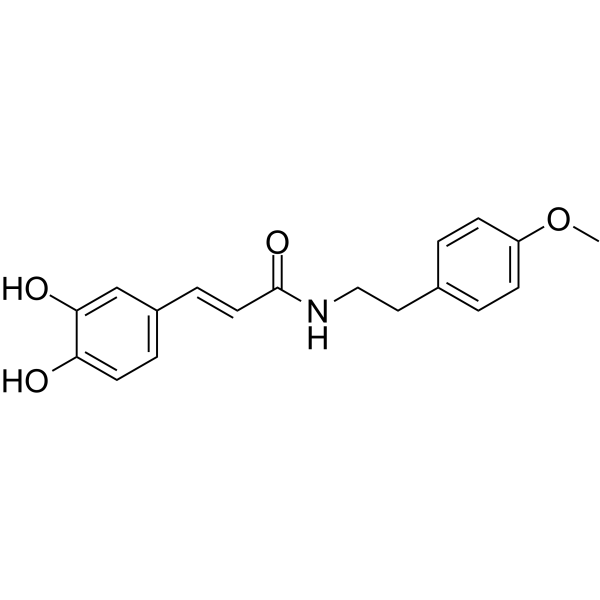
-
GC49210
N-desethyl Brinzolamide (oxalate)
AL 8520
An active metabolite of brinzolamide
-
GC69551
N-Ethylmaleimide-d5
NEM-d5
N-Ethylmaleimide-d5 是 N-Ethylmaleimide 的氘代物。N-Ethylmaleimide (NEM),烷基化自由巯基的试剂, 是一种半胱氨酸蛋白酶抑制剂。N-Ethylmaleimide 特异性抑制线粒体中的磷酸盐转运。N-Ethylmaleimide 同样也是一种去泛素化酶 (deubiquitinating enzyme) 抑制剂。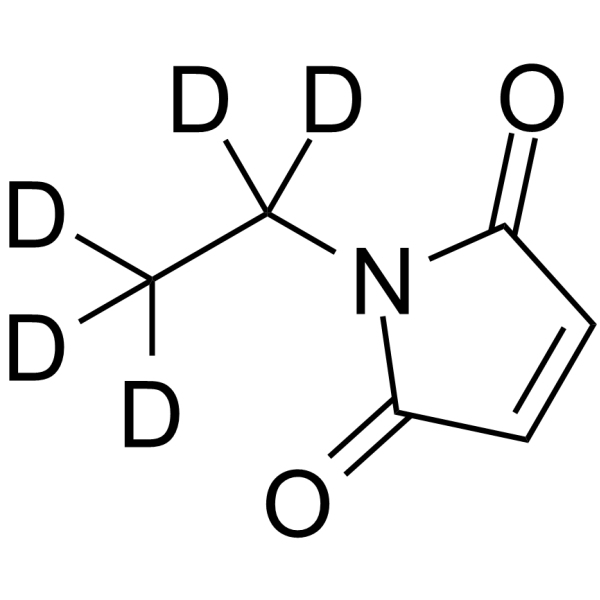
-
GP21966
N6AMT1 Human
N-6 Adenine-Specific DNA Methyltransferase 1 Human Recombinant

-
GP21967
NAA10 Human
N Alpha-Acetyltransferase 10, NatA Catalytic Subunit Human Recombinant

-
GP21968
NAA30 Human
N Alpha-Acetyltransferase 30, NatC Catalytic Subunit Human Recombinant

-
GP21969
NAA50 Human
N Alpha-Acetyltransferase 50, NatE Catalytic Subunit Human Recombinant

-
GP21970
NAE1 Human
NEDD8 Activating Enzyme E1 Subunit 1 Human Recombinant

-
GP21971
NAGA Human
N-Acetylgalactosaminidase Alpha Human Recombinant

-
GP22565
NAGK Human
N-Acetylglucosamine Kinase Human Recombinant

-
GP21972
NANA E.Coli
N-Acetylneuraminate Lyase E.Coli Recombinant

-
GP21973
NANP Human
N-Acetylneuraminic Acid Phosphatase Human Recombinant

-
GP21974
NANS Human
N-acetylneuraminic acid synthase Human Recombinant

-
GC65157
Naphthol AS-BR
色酚AS-BR
Naphthol AS-BR 是组织化学中,酸性和碱性磷酸酶的底物。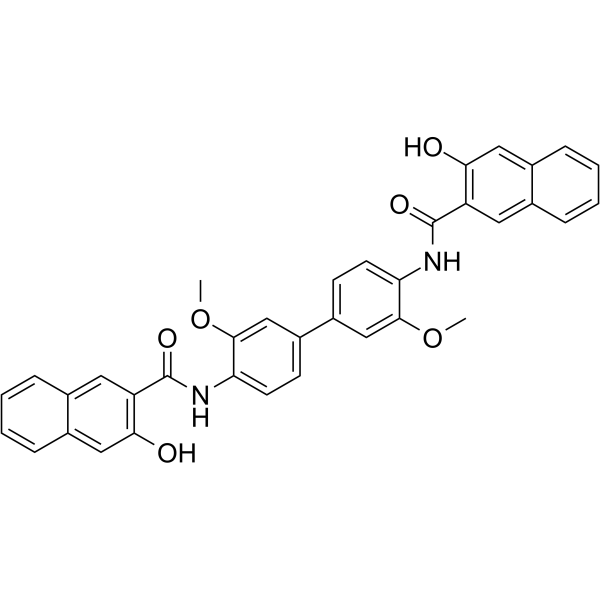
-
GP21975
NAPSA Human
Napsin A Aspartic Peptidase Human Recombinant

-
GC61697
Naringinase
柚苷酶
Naringinase是一种水解酶复合物,具有α-L-鼠李糖苷酶和β-D-葡萄糖苷酶的活性。Naringinase在自然界中广泛存在。Naringinase可用于类固醇,抗生素的生物转化,主要用于糖苷的水解。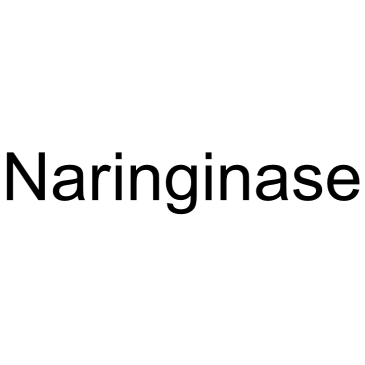
-
GP21977
NARS Human
Asparaginyl-TRNA Synthetase Human Recombinant

-
GP21976
NARS Human, Sf9
Asparaginyl-TRNA Synthetase Human Recombinant, Sf9

-
GP21978
NAT1 Human
N-Acetyltransferase 1 Human Recombinant

-
GP21979
NAT6 Human
N-Acetyltransferase 6 Human Recombinant

-
GC61621
NAZ2329
NAZ2329是受体型蛋白质酪氨酸磷酸酶(RPTPs)R5亚家族的第一个细胞可渗透抑制剂,相对于其他PTPs,它变构且优先抑制PTPRZ(hPTPRZ1的IC50=7.5µM)和PTPRG(hPTPRGIC50=4.8µM)。NAZ2329与PTPRZ的D1结构域结合,相对于PTPRZ整个(D1+D2)片段,其更有效地抑制PTPRZ1-D1片段,其IC50为1.1µM。NAZ2329可有效抑制胶质母细胞瘤细胞的肿瘤生长并抑制干细胞样特性。
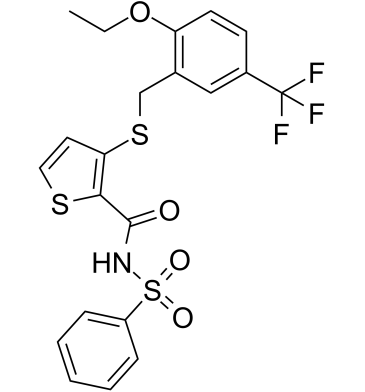
-
GC63099
NCGC00092410
NCGC00092410 是一种有效,选择性和非糖性葡萄糖脑苷脂酶 (glucocerebrosidase, GC) 抑制剂,IC50 值为 31 nM。NCGC00092410 对相关水解酶没有活性。NCGC00092410 是一种 GC 分子伴侣,可提高突变型细胞株中葡萄糖脑苷脂酶的活性和溶酶体定位。NCGC00092410可用于戈谢病的研究。
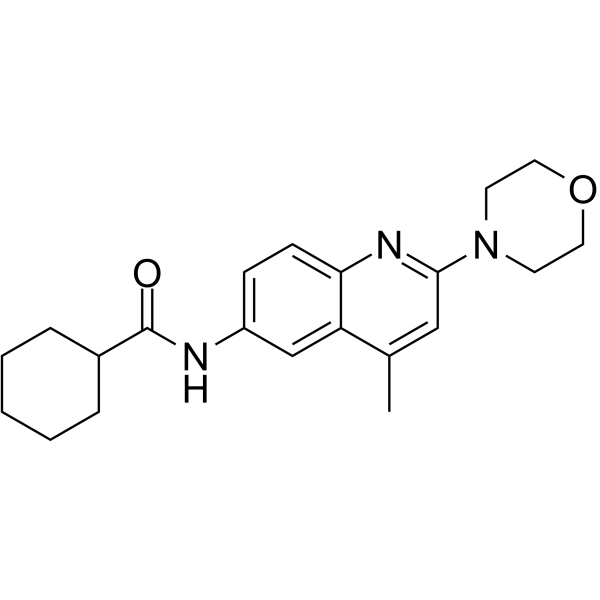
-
GC61403
NCGC00249987
NCGC00249987是一种高度选择性和变构Eya2的Tyr磷酸酶活性的抑制剂,对Eya2ED和MBP-Eya2FL的IC50分别为3μM和6.9μM。NCGC00249987专门针对肺癌细胞的迁移,侵袭伪足形成和侵袭。

-
GC62286
NCGC00378430
NCGC00378430 is an inhibitor of the SIX1/EYA2 complex that significantly suppresses breast cancer-associated metastasis in vivo without significantly altering primary tumor growth.
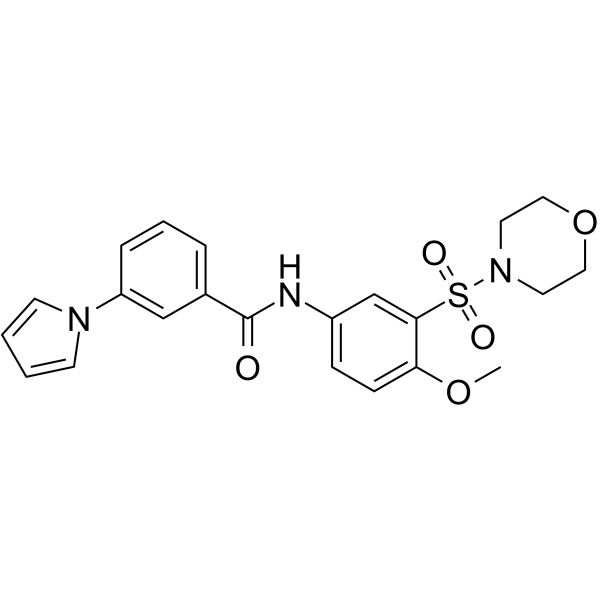
-
GC72955
ND-322 hydrochloride
ND-322 hydrochloride是一种有效且选择性的水溶性明胶酶抑制剂。

-
GP22566
NDK E.Coli
Nucleoside Diphosphate Kinase E.Coli Recombinant

-
GP21980
NDUFA2 Human
NADH Dehydrogenase 1 Alpha Subcomplex 2 Human Recombinant

-
GP21981
NDUFA4 Human
NADH Dehydrogenase1 Alpha Subcomplex 4 Human Recombinant

-
GP21982
NDUFA5 Human
NADH Dehydrogenase 1 Alpha Subcomplex 5 Human Recombinant

-
GP21983
NDUFAF1 Human
NADH Dehydrogenase 1 Alpha Subcomplex, Assembly Factor 1 Human Recombinant

-
GP21984
NDUFAF2 Human
NADH Dehydrogenase 1 Alpha Subcomplex, Assembly Factor 2 Human Recombinant

-
GP21985
NDUFAF4 Human
NADH Dehydrogenase 1 Alpha Subcomplex, Assembly Factor 4 Human Recombinant

-
GP21986
NDUFB4 Human
NADH Dehydrogenase 1 Beta Subcomplex 4 Human Recombinant

-
GP21987
NDUFB9 Human
NADH Dehydrogenase 1 Beta Subcomplex 9 Human Recombinant

-
GP21988
NDUFS2 Human
Histidine NADH Dehydrogenase Fe-S Protein 2 Human Recombinant

-
GP21989
NDUFS3 Human
Histidine NADH Dehydrogenase Fe-S Protein 3 Human Recombinant

-
GP21990
NDUFS4 Human
Histidine NADH Dehydrogenase Fe-S Protein 4 Human Recombinant

-
GP21991
NDUFS5 Human
Histidine NADH Dehydrogenase Fe-S Protein 5 Human Recombinant

-
GP21992
NDUFS6 Human
Histidine NADH Dehydrogenase Fe-S Protein 6 Human Recombinant

-
GP21993
NDUFV2 Human
NADH Dehydrogenase Flavoprotein 2 Human Recombinant

-
GP21994
NDUFV3 Human
NADH Dehydrogenase Flavoprotein 3 Human Recombinant

-
GP21995
NEDD8 Human
Neural Precursor Cell Expressed Developmentally Down-Regulated 8 Human Recombinant

-
GP21996
NEIL1 Human
Nei Endonuclease VIII-Like 1 Human Recombinant

-
GP21997
NEIL2 Human
Nei Endonuclease VIII-Like 2 Human Recombinant

-
GP22567
NEK7 Human
NIMA-related kinase 7 Human Recombinant





